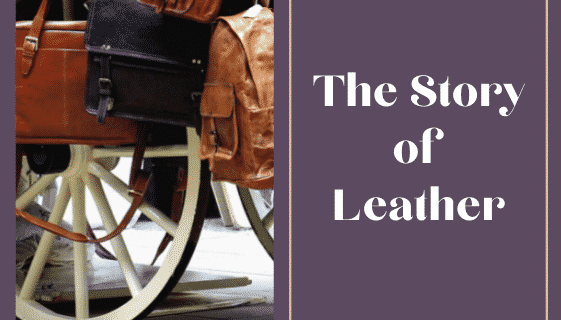Where does the term leather goods come from? Etymology and curiosity about this word
“Leather goods,” a term used in the past to refer to items made of animal skin, now has several linguistic connotations. In today’s era, leather goods mean much more than just leather items. As the Universal Encyclopedia web dictionary states: the term also includes the company that produces it, the techniques used to make it, the store that sells it, etc.
What do we find in the world of leather goods?
Today, leather goods are not limited to clothing and carpets. There are also shoes, wallets, belts…and especially handbags. It is precisely the latter that are the most sought after on the market, always monopolizing the first place on the podium of fashion trends. A leather bag is a symbol of luxury, elegance, sturdiness and nobility. Several giants of the Fashion Industry are dedicated exclusively to the production and sale of leather bags.
So where does this ancient art, which is gaining importance century after century, come from?
The National Center for Textual and Lexical Resources explains that “leather goods” draws its etymology from the word “Moroccan” or “goatskin”. The term and the know-how were transmitted to Europe by the Spanish, a word they learned in turn from the Muslims, the true inventors of the new practice: “marroqun”.
The genesis of the art of leather goods
It is known that the use of animal skins has very ancient roots in human history. The proof was given by archaeological findings on Egyptian soil: furs, shoes, objects of daily use, musical instruments… all made of leather. And that’s not all. The use of animal skin was also a common practice in ancient Greece: knights and fighters used leather leggings and epaulettes to protect themselves during battles.
Until then, leather goods existed, but with discretion: it was a response to basic needs, including that of protection from the cold and from the enemy in battle.

It was only at the beginning of the 12th century that leatherworking began to develop, particularly in Italy and in the Maghreb countries. Leather was used in the production of luxury items, bought and worn exclusively by the bourgeoisie, the only social class that could draw on the high price. Fortunately, nowadays leather goods are accessible to everyone and can be purchased by anyone who wants them. It was only at the beginning of the 12th century that leatherworking began to develop, particularly in Italy and in the Maghreb countries.
The leatherworker: from modest worker to expert craftsman
Initially a leatherworker was a simple worker who barely earned enough to live on. But as time went by, leather goods gained importance, the bourgeoisie and the wealthy population became more and more attracted to this trend, which soon became “art”. Nobles of the Middle Ages decorated their interiors with leather objects, especially with trunks and carpets. This phenomenon continued to grow until the 13th century when demand reached its peak and furs became a real must-have, sought after by the middle class. The furriers then became artisans and their creations became objects of common desire.
Leather goods as fashion and glitz
We arrive at the sixteenth century, where leather goods enter the glorious world of fashion. The art of leatherwork became indispensable and no outfit was complete without a leather accessory. Owning a leather item was a matter of wealth, a reason for pride and irreproachable pride.
From utility to aesthetics
Leather goods, which until then had only satisfied the need for protection from the elements, also became an object of aesthetics. For this reason, a leather bag not only had to allow the transport of objects, but also had to be beautiful and elegant.
The baptism of the art of leather goods
Until then, the art of leatherworking had no real name. It was only in 1835 that it was given the name “leather goods”. From that moment on, the leather goods industry began its successful expansion and in the 19th century saw the emergence of the great luxury leather goods brands. Hermès, Louis Vuitton, Lancel and other fashion houses saw the light of day thanks to the production of fine leather goods and at the beginning of the 20th century they created the most popular leather accessory in the world: the bag.
Leather goods for everyone and for all uses
After its success in the world of fashion, the art in question expands also in the field of Design: more and more sofas, headboards, luxury car seats are made with exclusive and refined leather. Thanks to the hardness of this material it is possible to preserve beauty and uniqueness over time. Because leather is not only color or grain, but also softness, texture, characteristic smell and even art.
Today, leather goods continue to be an emblem of elegance and the highest quality: bags, shoes, gloves and leather accessories are synonymous with innovation and refinement, the result of a tradition of craftsmanship that aims at excellence.




